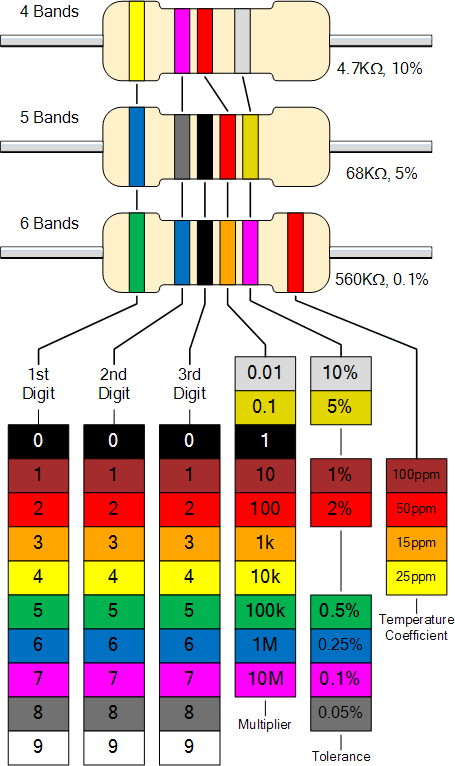A resistor is an electrical component that limits or regulates the flow of electrical current in an electronic circuit. Resistors can also be used to provide a specific voltage for an active device such as a transistor.
Resistance is one of the three factors at play in Ohm's Law, which states that current in amperes = voltage in volts/resistance in ohms. This equation involves voltage and resistance, two factors which affect the amount of current in a circuit. The current in a circuit is directly proportional to the electric potential difference impressed across its ends and inversely proportional to the total resistance offered by the circuit. The greater the battery voltage (i.e., electric potential difference), the greater the current, as the force guiding the electrons between ground and power is stronger. And the greater the resistance, the less the current. Charge flows at the greatest rates when the battery voltage is increased and the resistance is decreased. In fact, a twofold increase in the battery voltage would lead to a twofold increase in the current (if all other factors are kept equal). And an increase in the resistance of the load by a factor of two would cause the current to decrease by a factor of two to one-half its original value. (Adapted from physicsclassroom)
You can read the resistance of a resistor using a chart like this:
